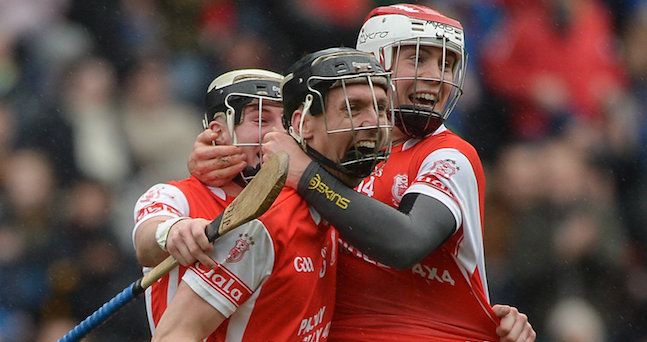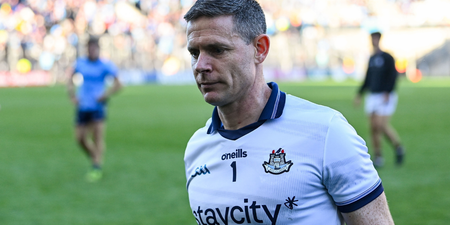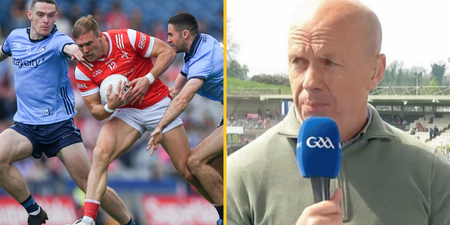Is fearr Gaeilge briste na béarla cliste.
If you asked a group of GAA people to name two of the best supported teams in the country, chances are that Cuala and Slaughtneil would be mentioned more than once.
The vibrant Cuala ultras and the infectious Slaughtneil spirit takes over the stands and spreads onto the pitches over which their esteemed soldiers stride.
Both of these clubs have enjoyed unprecedented success in recent years. What stands out about them both is the unity and the togetherness that runs through the blood of their set-ups.
Everyone is rowing in the one direction and that direction seems to be the right one.
Darragh O’Connell landed on his feat when he transferred to the Dalkey club. With the Kerry born Gaeilgeoir teaching in Dublin, he made the tough but calculated decision to leave his native Abbeydorney and throw his lot in with the Cuala hurlers.
He must have felt like nothing changed when he heard his new teammates speaking as Gaeilge at training. The majority of these Cuala hurlers were educated through the Irish language in gaeilscoilleanna. Scoil Lorcain is the local primary school and Coláiste Eoin is the local secondary.
“It’s incredible. There are so many in the club that speak Irish. Even our own team, I would say upwards of 90% can speak Irish,” he said in an interview with AIB GAA earlier this year.
Our native tongue is a huge part of this culture in Cuala. Many of their players go by their Irish names rather than their English. Take the side’s centre forward Colm Ó Cróinín, take Cillian Ó Séanáin, take an Laoch na hImeartha from Saturday evening’s final, Seán Ó Móráin.
Moments after completing the serious feat of winning two Tommy Moore cups in a row, the side’s spiritual leader performed his post-match interview with TG4’s Micheál Ó Domhnaill trí Ghaeilge.
It wasn’t Gaeilge briste though. It was smooth, confident Irish. He gave his thoughts on the game and this wasn’t some sort of token gesture to look good.
His pronunciation was perfect, his tenses made sense, he even nailed the saorbhriathar, there was no stuttering. This man is a Gaeilgeoir.
“An méid oibre atá déanta againn. Tá sos beag tuillte againn anois.”
Níl dabht ar bith faoi sin.
Laoch na hImeartha do @CualaCLG Seán Moran
Today's @AIB_GAA man of the match is Seán Moran #TheToughest pic.twitter.com/I4WDYnevHd
— Spórt TG4 (@SportTG4) March 24, 2018
In an age where many people’s only problem with TG4 is their lack of English commentary, it’s a refreshing reminder that the culture, the tradition upon which the GAA was founded and developed still exists.
It also lets us all know that it’s not impossible to keep those traditions. These Cuala lads weren’t born in the Gaeltacht. They’re no different to any of us but still in their Dublin county final with Kilmacud Crokes, 20 out of the 30 players on the pitch had Gaeilge, having graduated from Coláiste Eoin.
The Cuala Irish language skills are is largely the result of Scoil Lorcain at primary and colaiste eoin at secondary. Interestingly I am told that in the Dublin final this year between chokes and cuala 20 of the 30 were ex col eoin.
— Shane Hayes (@ShaneJHayes) March 25, 2018
Slaughtneil is another place where Gaeilge is everywhere, where identity and promotion of our culture is the lifeblood. They won the All-Ireland camogie title on the same weekend.
Efforts like these, working together for the good of the cause. That’s what builds a team spirit. That’s what sets these two clubs apart.
Former Tipperary hurler a Timmy Hammersley is envious that such a tradition doesn’t exist in his own club, Clonoulty Rossmore.
Sean Moran interview as Gaelgie is very impressive, seemingly most Cuala guys speak the language. Success of @GACSlaughtneil camogie team aswell today and their Gaeltacht is well known. Link between cultural pride and a vibrant club?
— Timmy Hammersley (@TimmyHammersley) March 24, 2018
He’s not the only one.





















































